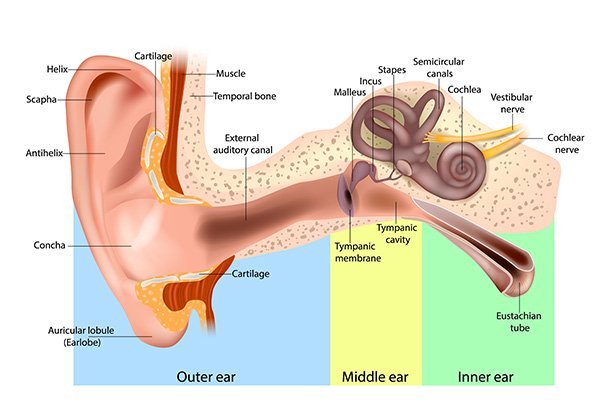Unraveling the Mysteries of Hearing: How the Ear Functions
How Our Ears Tune Into the World: Understanding the Auditory Process
Our ears are not just passive receivers of sound; they're intricate systems that convert sound waves into electrical signals, which our brains interpret as sound. This process involves three main parts of the ear: the outer ear, the middle ear, and the inner ear. Each part plays a crucial role in the journey of sound, from the moment it enters our ear to when we recognize and react to it.
1. The Outer Ear: Your Personal Sound Collector
The outer ear, or pinna, is the part you can see, and it's designed to collect sound waves and funnel them into the ear canal. This unique shape isn't just for show; it helps to determine the direction of sounds, enabling us to pinpoint where they're coming from—a handy evolutionary trait for survival and communication.
Once sound waves travel down the ear canal, they reach the eardrum, a thin membrane that vibrates when hit by sound waves. These vibrations are the first step in transforming sound waves into something we can understand.
2. The Middle Ear: Amplifying the Beat
The middle ear houses three tiny bones known as the ossicles—the malleus, incus, and stapes, also playfully referred to as the hammer, anvil, and stirrup. These bones are the smallest in the human body, but they have a mighty job. They amplify the vibrations from the eardrum and transfer them to the inner ear. This amplification is crucial—it ensures that even the softest whispers don't go unnoticed.
3. The Inner Ear: Converting Vibrations into Electric Signals
The inner ear is home to the cochlea, a snail-shaped, fluid-filled structure lined with thousands of tiny hair cells. These cells are the true stars of the show. When the ossicles transmit vibrations to the cochlea, the fluid inside moves, causing the hair cells to sway. This movement converts mechanical vibrations into electrical signals, which travel via the auditory nerve to the brain.
4. The Brain: Interpreting Sounds
Once these electrical signals reach the brain, they're interpreted as sound. This interpretation allows us to recognize different aspects of sound, like pitch, volume, and timbre, helping us understand complex auditory information, from the symphony of a classical concert to the nuances of a conversation.
Why Understanding Your Ears Matters
Appreciating how the ear works isn't just an academic exercise. It's crucial for recognizing the importance of hearing health. Exposure to loud noises, aging, and various health conditions can impact our hearing. By understanding how our ears work, we can take better steps to protect them, ensuring they continue to connect us with the world around us.
Conclusion: Tuning Into the Symphony of Sounds
The ear is an extraordinary organ that allows us to experience the world in rich, auditory detail. By understanding how the ear works, we're not just learning about a biological process; we're appreciating a system that enables us to communicate, enjoy music, and interact with our environment in meaningful ways. So, the next time you're listening to your favorite song or chatting with a friend, remember the incredible journey that sound takes to reach your brain and the remarkable process that allows you to hear and enjoy the world's symphony.
In the spirit of keeping our ears in tip-top shape, what are some steps you can take to protect your hearing? And how can understanding the ear's anatomy help you appreciate the sounds of life even more? Engage with us in the comments below, and let's continue to explore the wonders of hearing together.

